| Microphones |
| Microphone selection |
| Polar response Frequency characteristics |
| Choosing
the right microphone for a particular sound is a subjective
process.
What sounds "right" for the particular application is the ultimate criterion. There are, however, certain characteristics of different microphones which suggest their use for recording different types of sound. Keeping the following microphone characteristics in mind can help you make intelligent choices. |
| Condenser microphones have an accurate transient response making them useful for recording instruments with a high degree of transient detail such as percussion instruments and plucked strings. | By contrast a dynamic moving-coil microphone with slower transient response can be used in applications where it is desireable to soften the detail, taking the "edge" off a sound. |
| For distantly recorded or quiet sounds a microphone with high sensitivity will give the lowest noise. Condenser microphones typically have the highest sensitivity followed by dynamic large diaphram moving coil microphones and then ribbon and small moving coil microphones. | With a closely miked loud sound a sensitive microphone may generate a signal sufficient to overload a mixer mic preamplifier. Some microphones are equipped with an attenuator switch to lower their output in this case. |
| Polar response |
| A microphone's polar response describes its sensitivity to sound approching the microphone from various angles. The sensitivity variesfor different frequency ranges so the graph will usually indicate several of these to give amore accurate indication of the microphone's overall response characteristics.The graph to the right shows a typical response pattern for a cardioid (unidirectional) microphone at three different frequencies. | 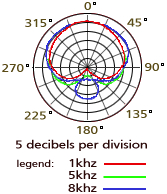 |
| A microphone's polar response pattern makes it useful for different applications, particularly multi-microphone settings where proximity of sound sources makes microphone leakage a problem. |
| There are four typical patterns commonly found in microphone design: |
| Cardioid (uni-directional) microphones lack proximity effect making them less sensitive to vocal popping and are useful in avoiding low frequency emphasis in close miking applications. They're also useful for capturing room ambience. | Hypercardiod (emphasized uni-directional) patterns emphasise these features even more. | Bi-directional (figure eight) microphones offer maximum directionality (in two directions) and maximum side rejection. | Omni-directional |
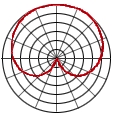 |
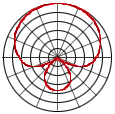 |
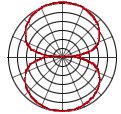 |
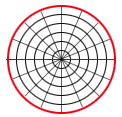 |
| A unidirectional microphone with a cardioid pattern is useful in its broad focus and rejection of sound coming from the rear. | Supercardioid polar patterns offer a tighter focus and more rejection of sound at the sides of the microphone than cardiod patterns. |
| Frequency characteristics |
| The frequency response of a microphone can be a useful characteristic when recording certain sounds. In general a flat frequency response over the microphone's frequency range will result in an accurate and natural recorded image. | 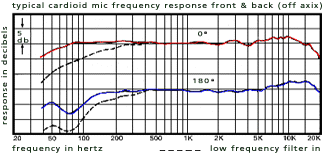 |
| Most musical instruments range from about 80 Hz to 15 kHz, with bass instruments falling between approximately 40 Hz to 9 kHz. If you don't need the low end for a particular sound then it's not necessary to use a microphone with extended low frequency response. You might just end up picking up rumble, pops, and mechanical noise which need to be repaired in the mix using equalization. Many microphones have a low frequency roll-off switch that can be used to avoid some of these problems. |
| The presence peak at around 5 kHz found in some microphones emphasizes the upper harmonics of a sound and can add desired brilliance or emphasis to a sound such as voice or percussion instrument. |
| Proximity effect found in most condenser and dynamic type microphones with cardiod polar patterns can be used to boost a recorded sound's low frequency characteristics adding "warmth" and "fullness". Proximity effect becomes audible when using these microphones at very close range. |
| microphone accessories | mic placement |
| isolation | wireless microphones |